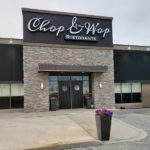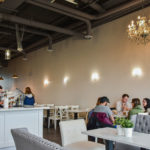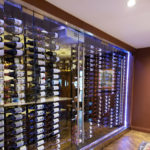Written by: Ariel Landa: Global Hospitality Leadership (MPS)
Electronic kiosks and tabletop tablets have been growing in use. Customers are accepting these systems and are reacting positively to them, for example, in 2015 it was found that 70% of Applebee’s diners interacted with the tablets, more than 50% of those guests used it for payment and 30% of the entire chain’s transactions now come from the tablets.
This blog was written to explore the opportunities, broader applications and impacts the technology has had on the hospitality industry.
Opportunities:
- Help improve customer relationship management (CRM) by personalizing various aspects of the dining experience.
- Offering promotions tailored to the customers preferences
- Example: when a customer with vegan preferences logs into the table-side tablet they will be offered only vegan options as that tablet will know that information (via survey or a waiter inputting that preference in the diners account).
- Allowing a waiter to focus on the experience by eliminating a number of tasks
- Example: patrons can request the bill, extra sauce, more drinks etc. through the tablet thereby freeing up the waiter’s time to focus on the hospitality side of his/her job.
- Offering promotions tailored to the customers preferences
- Improvement to a business’s bottom line
- Revenue Streams added: games such a poker, blackjack and/or children’s games to keep them occupied thereby attracted the profitable family segment can be programmed into the table-side tablets
- Cutting labor costs: by eliminating waiter tasks one can potentially reduce wait staff
- Tips have increased because it is easier to pay the already offered 20% at a click of a button than manually inputting another number.
Broader Applications
- Data gathered can be used for:
- Training- identifying which waiter needs to brush up on second-round skills
- Integration with third party technologies to provide granular data that can be leveraged powerfully
- Example: the tablet can be integrated with a POS to generate very detailed capacity reports
- Facial recognition- can be integrated to elevate the customer experience
- Example: in China, a fast-casual concept allows customers to pay with a smile
Impacts on Hospitality: There are critics that view the technology as taking away from the customer service experience and ultimately affecting the hospitality side of the restaurant operation negatively
- May seem off-brand: a nice steak house with linens shouldn’t have a display board offering promotions as it lowers the perceived value of the restaurant
- Eliminating waiter tasks eliminates touch-points guests have with the staff therefore diminishing the personal aspect that wait staff bring to the dining experience
- Potential of being hacked
- Storing data means that it may be hacked.
- Example: Chipotle (2016)
- Storing data means that it may be hacked.
Conclusion
The positive’s outlined above need to be weighed against the negative potentials before deciding to implement. Once implemented, constant monitoring must be standard, as a hack can be devastating to the business.







